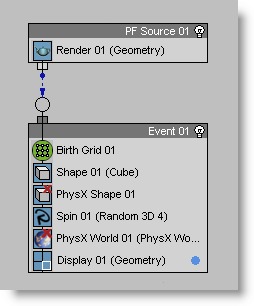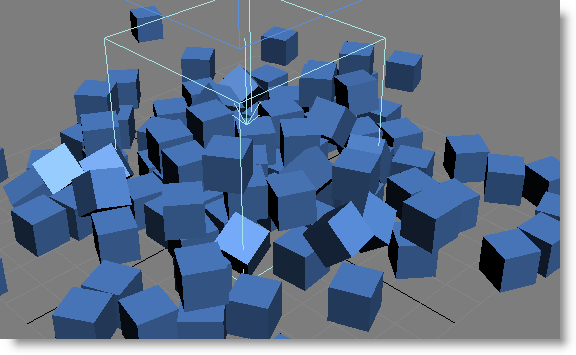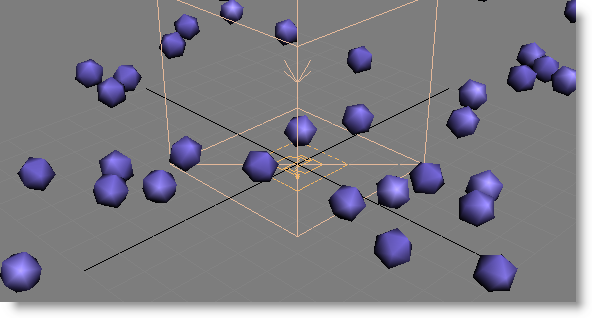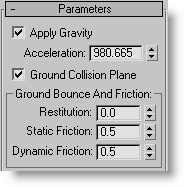When first learning to simulate particle physics with Box#2, the best place to start is with the included preset PhysX Flow.
-
Start or reset 3ds Max, press 6 to open Particle View, and then drag the PhysX Flow from the depot to the event display.
This adds in one fell swoop all the necessary elements for a simple physics simulation.

-
Play the animation.
It starts out with a cubic arrangement of box-shaped particles suspended in mid-air, which quickly fall to the ground and ends up randomly scattered around the point of impact.

The boxy particles don't do much after they fall, but you can add some rolling action by making them round.
-
Click the Shape operator and set Shape to Sphere and Size to 5.0 (the default size of 10 would make the particles collide at the start of the simulation, thus flying away instantly). Also click the PhysX Shape operator and set Collide As to Sphere. And last, because the rolling away takes some time, set the animation length to 200 frames.
PhysX Shape determines the particles' characteristics during the simulation.
-
Rewind the animation and play it again.
This time the particles fall and then disperse by rolling away.

The physics-simulation engine in Box#2 is the PhysX World helper, which you can access from Particle View.
-
In Event 01, click the PhysX World 01 operator, and then on its parameters rollout, click the => button.
This selects the helper and shows its Parameters rollout on the Modify panel in 3ds Max.

Note that Apply Gravity and Ground Collision Plane are on. Incidentally, this is not the case when you create a PhysX World helper explicitly, either via the Create panel or from the PhysX World operator; both options are off by default.
-
Try reducing the Acceleration (gravitational, that is) value to 10.0.
This time, when you play the animation, the spheres fall much more slowly and take longer to roll away.